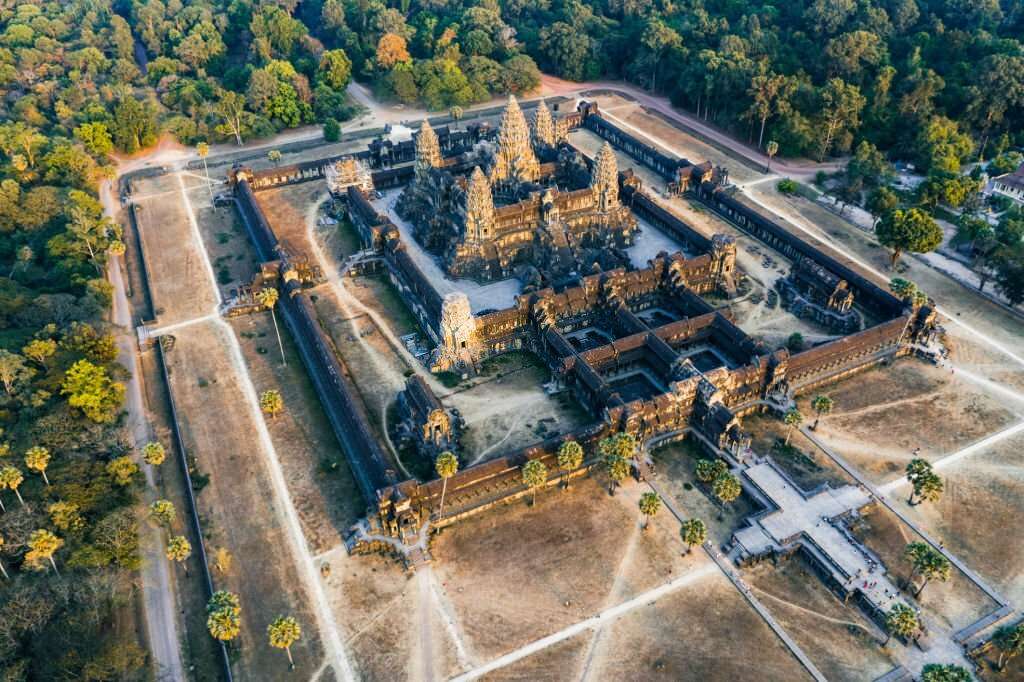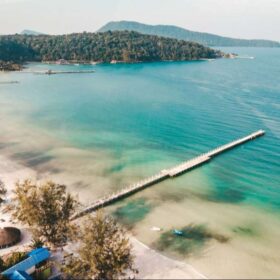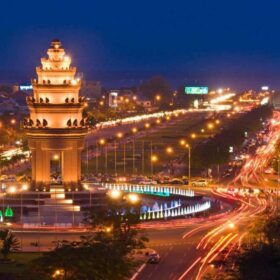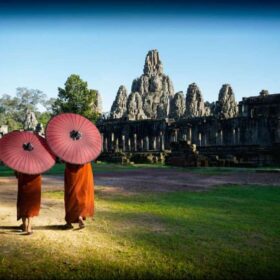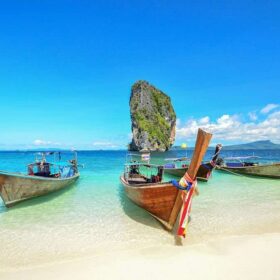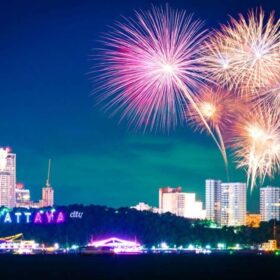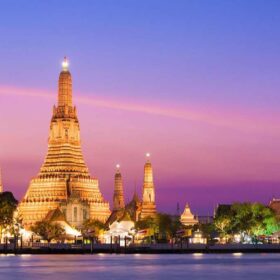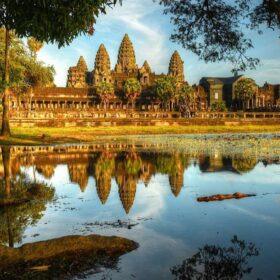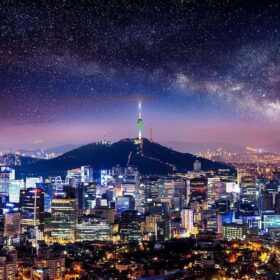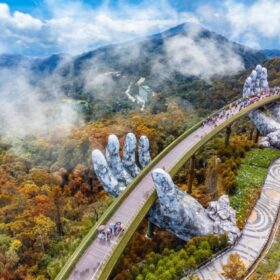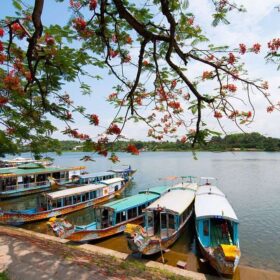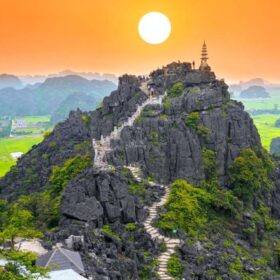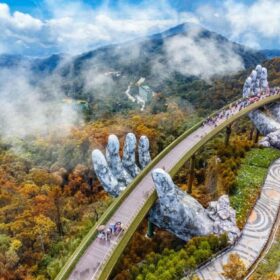Renowned for its monumental temples like Angkor Wat and marred by the brutal Khmer Rouge era of the 1970s, Cambodia’s history encompasses both remarkable artistic achievements and horrifying atrocities.
While it’s the historical aspect that primarily attracts travelers, this Southeast Asian nation offers a wealth of tourist attractions for those who stay beyond a brief visit to the temples of Siem Reap.
Cambodia beckons with its pristine sandy beaches along the coastline, appealing to sunseekers. The jungle-clad countryside caters to the more adventurous, and the vibrant capital of Phnom Penh immerses visitors in the bustling rhythm of contemporary city life in Cambodia.
When planning your sightseeing adventures in this captivating country, refer to our list of the best places to visit in Cambodia.
Angkor Wat
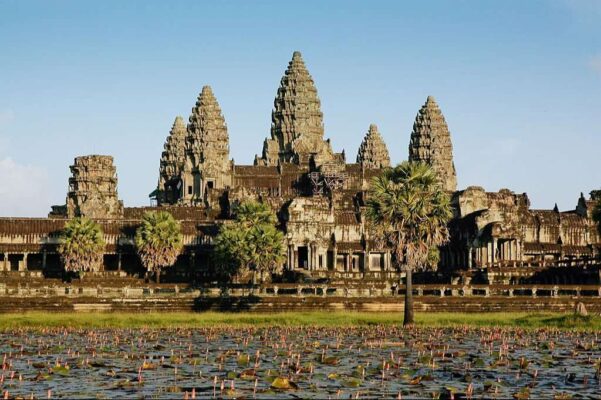
Unfortunately, due to the renowned pagodas and overgrown stupas recognized by UNESCO, this area is also one of the most crowded destinations in the country.
Nonetheless, it is certainly worth enduring the crowds and venturing out of Siem Reap for a while to witness this world-renowned marvel.
Nestled amid watery rice paddies and dense jungles, it emerges from the treetops with a blend of historic Khmer towers and captivating ancient Hindu shrines.
In the present day, it’s the chants of Buddhist monks and the amazed gasps of travelers that prevail, as they meander amidst the intricate base reliefs and the grand sandstone sculptures of mythical creatures.
Phnom Penh
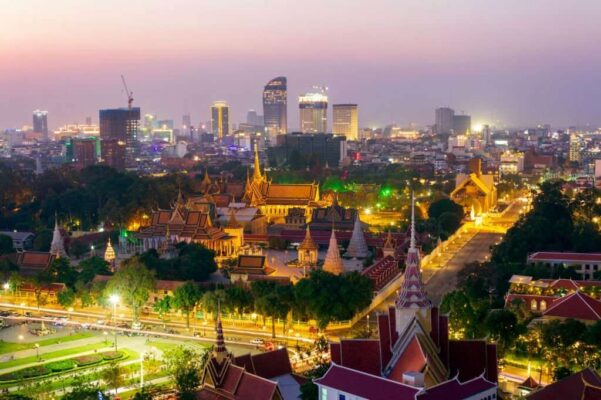
Cambodia’s capital city has endured – and continues to endure – its share of difficult times and hardships. However, with the city’s complex history comes a resilience and strength that is truly inspiring. While the Killing Fields are just a short journey away from the bustling urban streets, they remain a solemn reminder of the Khmer Rouge regime’s atrocities and its victims.
The Tuol Sleng Genocide Museum, located in a former school, also serves as a somber reflection of the recent traumatic experiences endured by the Cambodian people.
Nevertheless, Cambodia is not defined solely by its dark past. Strolling through the streets of Phnom Penh, you’ll encounter warm smiles from locals going about their daily lives, exploring markets, or simply enjoying the banks of the Tonle Sap River. Don’t miss the opportunity to visit Wat Phnom temple, from which the city takes its name, to find some solace and time to contemplate this remarkable city.
Read More: Best Things to Do in Phnom Penh
Siem Reap
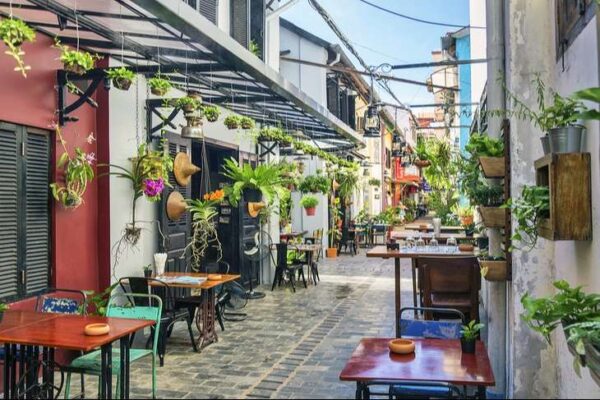
Siem Reap is a vibrant, bustling city with a dusty charm. While most travelers to Southeast Asia may not visit Siem Reap specifically for the city itself, it serves as a gateway to the world-famous Angkor temples. Just a quick tuk-tuk ride from the city center, you’ll find yourself in the midst of a jungle-shrouded temple complex straight out of a storybook.
In Siem Reap, visitors can enjoy the city’s lively atmosphere, indulge in delicious dinners, share drinks with friends, and dance the night away. If this doesn’t align with your preferences, you can opt for a more relaxed experience at one of the numerous massage parlors.
Read More: Best Things to Do in Siem Reap
Battambang
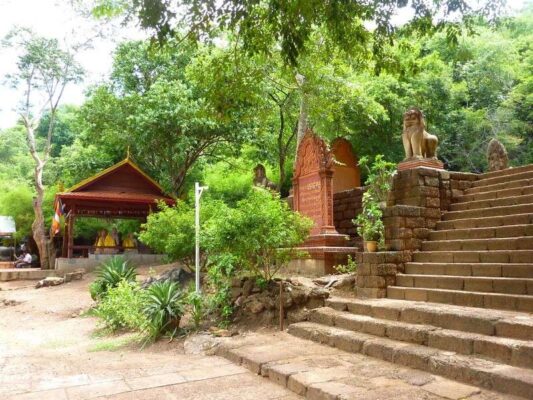
Battambang, with its charmingly decaying colonial architecture and the breathtaking countryside that envelops it, has emerged as an unexpected haven for artists. It’s not only a nurturing ground for Cambodia’s budding artistic talents but also an enclave of ancient temples and pagodas.
This languid and dreamy city provides a welcome contrast to the hustle and bustle of Cambodia’s larger urban centers. However, there is a looming threat from large corporations aiming to demolish the town’s historic structures in the city center. Therefore, it’s essential to visit Battambang before it’s too late, and these venerable landmarks are replaced by concrete.
Kampot
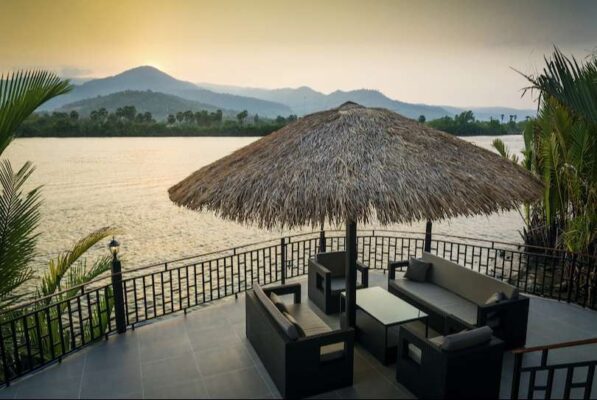
Kampot may bear the label of a city, but its essence is far from urban. The city’s tranquil allure captivates travelers who initially plan for a brief visit but end up extending their stay significantly. Its serene streets are perfect for leisurely bike rides, allowing you to pass by locals engrossed in their daily routines and school children making their way to classes.
The city exudes a warm and familial ambiance, with its residents extending a hearty welcome to visitors. Resembling a haven for free spirits, many travelers find themselves here for the long haul, even establishing small businesses. You can engage with fellow visitors at the local cafes and find comfortable lodging in one of the many excellent guesthouses.
Banlung
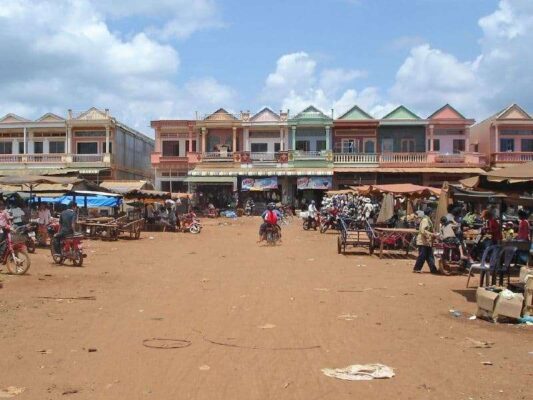
Banlung, situated in a remote region on the borderlands of Vietnam and Laos, boasts dusty red roads and picturesque countryside. This area has felt the impact of logging, illegal trade, and relatively new tourism in the town.
Venture into the bustling marketplace and consider embarking on a day trip to explore the natural wonders that envelop the city. Not far from the urban center, you will find Boeng Yeak Lom, a vast crater adorned with mesmerizing turquoise waters, nestled within the depths of the lush jungle.
Sihanoukville
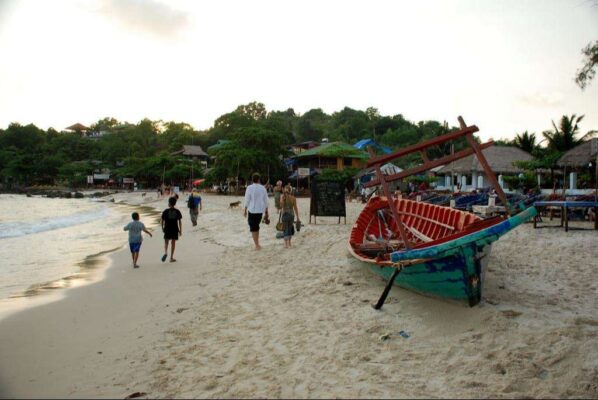
Sihanoukville, a tranquil and isolated coastal town, holds the distinction of being Cambodia’s top beachside resort destination. Originally a quaint fishing port, it has now drawn tourists seeking relaxation along Cambodia’s shoreline.
While it remains relatively untouched by mass tourism, significant business and development are making their way to the area. The pristine white sand beach is lined with charming shacks and bars, offering a haven for those who wish to unwind with a drink while gazing at the sea.
Accommodation options in Sihanoukville are abundant and often budget-friendly. Despite occasional concerns about the town’s atmosphere, with lingering individuals and older solo male travelers, the city serves as a gateway to Cambodia’s tropical islands.
Kratie
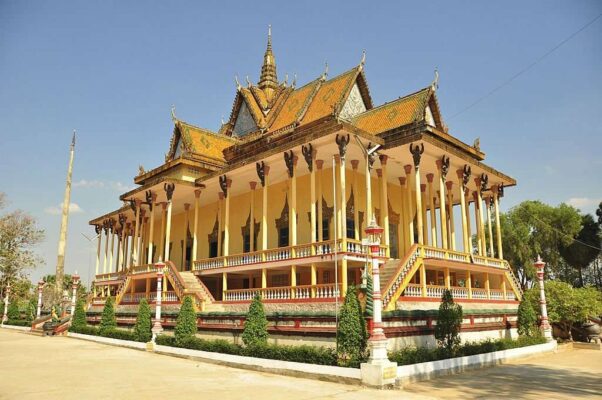
Kratie, is a quaint town shaped by the meandering Mekong River. This is a favored stop for travelers seeking a taste of local life and the opportunity to spot the Irrawaddy dolphins inhabiting this stretch of the river.
Sitting in one of the riverside cafes offers a glimpse into the challenging and impoverished lives of many locals, where children without clothing beg for help while travelers capture images with their SLR cameras. Despite the hardships, the people of Kratie extend a warm welcome to tourists.
For an enjoyable experience, hop on the ferry boat to cross the Mekong and spend a day cycling around Koh Trong Island, where you can explore the small island community residing in the middle of the river.
Kep
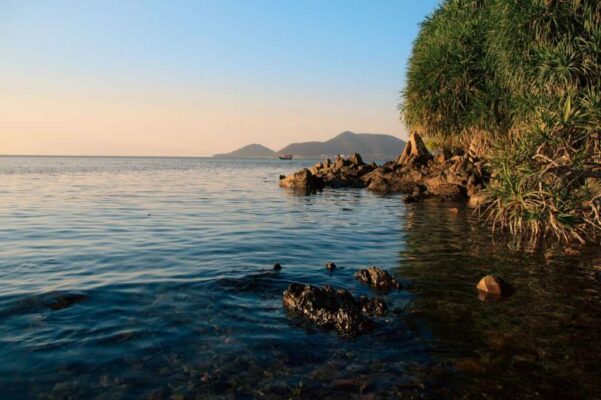
Kep is a coastal town that entices tourists with its delectable cuisine, sandy beaches, and a national park. Originally established as a seaside retreat for French socialites in the early 1900s, the city boasts large Western-style villas.
Several of these villas have fallen into disrepair and are now reclaimed by the advancing jungle, offering fantastic photo opportunities. Visitors of various kinds are drawn to this family-friendly town for its tranquil sunsets, mouthwatering seafood, and the superb hiking trails found in Kep National Park.
Kampong Thom
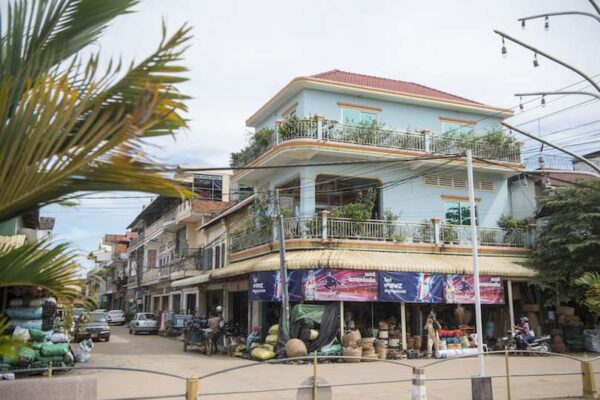
Located halfway between Siem Reap and Phnom Penh, Kampong Thom is often underestimated, yet it offers more than just a brief stopover. Nature enthusiasts can relish the wildlife that thrives in Kampong Thom’s scenic environs. Quaint farms and picturesque rice fields provide an ideal habitat for various bird species and wildlife.
Moreover, on the outskirts of town, you’ll discover the captivating ruins of Sambor Prei Kuk, remnants of the Chenla Kingdom. Astonishingly, this ancient city predates Angkor by 400 years!
Koh Kong
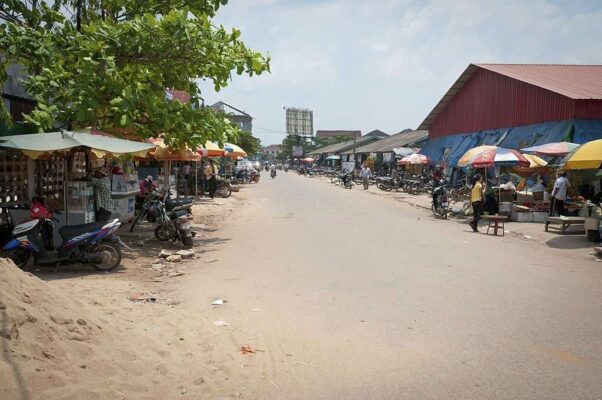
Koh Kong city is still in the process of development, but this does not mean that the urban area is not worth a visit. With more tourists arriving and the city’s growing adventure tourism sector, there’s also been an increase in ecotourism opportunities in the surrounding countryside.
Consider spending a few nights in the city and embarking on a tour to explore the nearby beaches and pristine waterfalls nestled deep within the jungle.
Kampong Cham
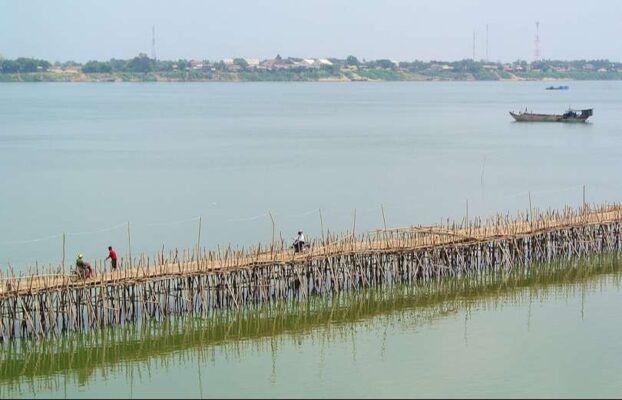
Kampong Cham, situated along the meandering orange waters of the Mekong, serves as a trade hub in the region. While this friendly little city may not be heavily developed or a major tourist destination, it should not be overlooked. Its charm lies in the warmth and hospitality of the local people.
There may not be a plethora of activities here, but you can enjoy leisurely strolls along its bustling boulevard and picturesque riversides. One of the city’s top attractions is the annual rebuilding of the bamboo bridge, which spans the Mekong and connects to an intriguing island community well worth exploring.
Accommodation: Where to Stay in Cambodia: Best Areas & Hotels
Read More: Best Beach in Cambodia
FAQs
Q: What is the best time to visit Cambodia?
A: The best time to visit Cambodia is during the dry season, which runs from November to April, to avoid the monsoon rains.
Q: Are the temples of Angkor Wat crowded with tourists?
A: Yes, Angkor Wat can get crowded, especially during sunrise. To avoid crowds, consider visiting in the late afternoon or exploring less-visited temples.
Q: Is it safe to visit Cambodia?
A: Cambodia is generally safe for tourists, but it’s essential to take standard precautions, such as safeguarding your belongings and being aware of your surroundings.
Q: What is the local currency in Cambodia?
A: The local currency in Cambodia is the Cambodian Riel (KHR), but the US dollar is widely accepted and used for most transactions.
Q: How can I get around Cambodia?
A: You can get around Cambodia by using tuk-tuks, taxis, buses, or domestic flights, depending on your destination and budget.

